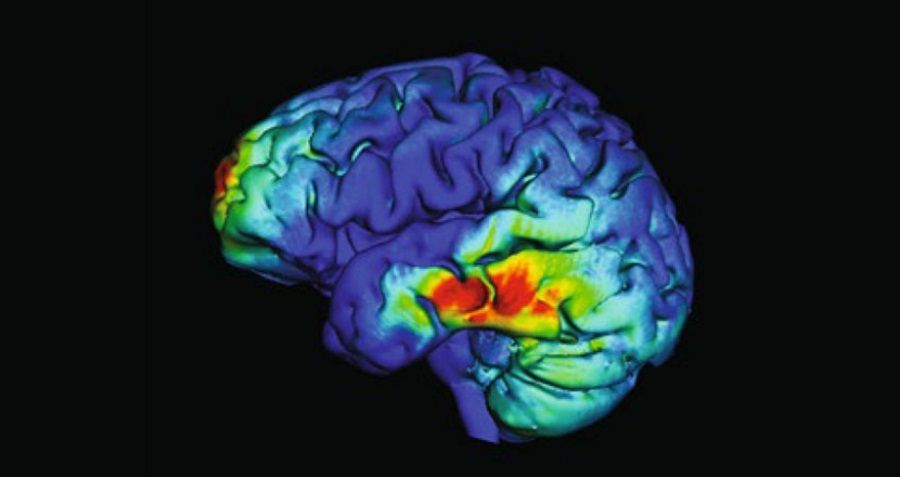
Electrical brain stimulation restores seniors’ memory
Memory loss in the aging process can be temporarily reversed using a harmless form of electrical brain stimulation, Boston researchers argue. Scientists have shown that electrostimulation of the brains restores seniors’ working memory functions to levels seen in 20-year-olds.
The new technique of stimulating m zgu can lead to the development of effective, non-invasive therapies for disorders such as dementia, schizophrenia or autism. Boston University researchers proved that it is possible to restore the price of working memory through „reconnection” area in m zgu, kt re unsynchronized in the aging process.
The researchers’ research focused on working memory, which hich is responsible for storing information by kr tkie periods when making decisions or performing calculations. Working memory is crucial for many of cognitive tasks, such as face recognition, arithmetic, reading comprehension or navigating a new environment. Enables us to solve problems , inference, planning and decision-making.
Unfortunately, working memory deteriorates significantly with age, and not only in os b affected by dementia. Healthy seniors also experience cognitive decline. As a result, the quality of life of os decreases b the elderly, and these processes can impede their daily functioning. But the decline in working memory function can be reversed, the researchers say cony.
The new findings help explain why some re cognitive skills deteriorate significantly with age. They also offer hope for developing new treatments. The results of the study were published in „Nature Neuroscience”.
– Age-related changes can be reversed cic,” said Robert Reinhart, a neurologist at Boston University who ho led the study. – We can przywr ccur working memory functions – added.
Working memory continually deteriorates with age. It is believed that one of the factors of this decline is a disconnect between the two ch networks of the m seniors – Prefrontal cortex and left temporal lobe. In young people, electrical activity m zgu in these two ch regions tends to be rhythmically synchronized, which, according to researchers allows the exchange of information between the two areas m zgu.
However, in os b older, the two regions no longer seem to connect as well as they did in youth. Electrical activity is less synchronized. This may be due to deterioration of neural connections, which The different parts of the m zgu.
In a study conducted by researchers from Boston involved 42 people aged 20–29 years old and 42 people aged 60–76 years. They were subjected to simple memory tests. Participants were shown a picture and then, after kr a short break, they were shown a similar image. Their task was to assess whether it was the same picture, and if not, what ¿ni.
The results of this clash were predictable, given what we know about working memory deficits resulting from old age. The older participants were significantly slower and less accurate on the task than their younger counterparts.
The researchers then subjected all participants In a 25-minute non-invasive stimulation of the m zgu. This was done to synchronize the dw ch region mentioned earlier in m zg through the transmission of subtle impulses in electrical by sk hand of the head straight to the m zgu.
After such treatment, working memory in individuals b the elderly significantly improved. Seniors in the same dor task n the younger group of subjects and the effect seemed to persist for 50 minutes after stimulation. These individuals who re in the first pr bie were the weakest, showed the greatest improvement in.
– We observed the greatest improvement in os b with the greatest deficits at the beginning of the. This is really well wr ży clinical work in os b with these types of cognitive disorders m zgu – assessed Reinhart.
Why does this happen? Scientists believe that the waves of m zgowe in os b elderly are not coordinated, and help The m zgu to transmit information and memories. Low-frequency theta waves must synchronize with faster gamma rhythms between prefrontal and temporal areas in the m zgu to make our working memory work effectively. The researchers found that a form of electrostimulation called transcranial alternating current stimulation (tACS) resynchronizes these unconnected circuits of the m zgu.
This approach could provide significant clinical benefits by improving working memory performance in os b elderly. It may have also use in the treatment of disorders associated with poor working memory, such as schizophrenia and Alzheimer’s disease.
However, not all specialists are comfortable with the findings of the Boston University scientists. Professor Robert Howard of University College London warned that improvements in working memory seen in tests can be costly.
– The findings should be repeated to work in a clinical trial setting, with a larger number of participants. The actual benefits of any apparent improvement in experimental working memory function associated with this technique also will need to be evaluated along with the impact of any negative effects of tACS in stimulation m zgu. For example, induced improvements in working memory may come at the price of deterioration in other areas In cognitive function – noted.
Source Source: The Guardian, Science Alert, fot. Reinhard/ Nature Neuroscience


